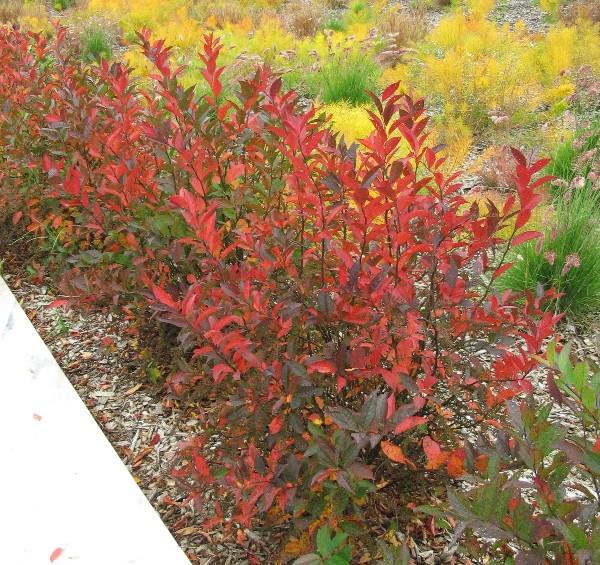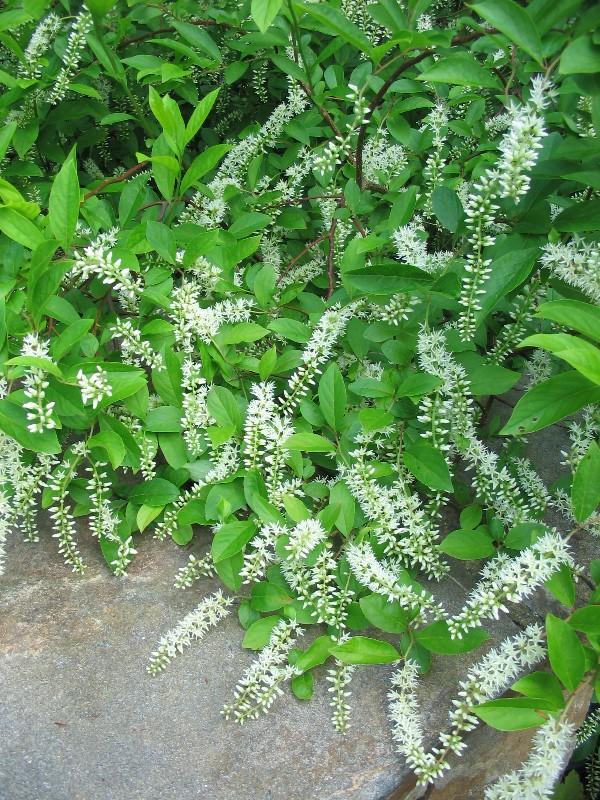About Virginia sweetspire
Itea virginica
Deciduous shrub
Maryland Distribution: Coastal Plain
Height: 6 to 10 feet
Flowers: small white flowers gathered on 3-to-6 inch long racemes, showy, fragrant; blooms May-June
Fall color: orange - red - burgundy
Sun: Full sun to shade
Soil: any soil texture; moist to wet; high organic matter; pH 5.1-7.5
Garden Uses: This deciduous shrub is native to the mid-Atlantic and southeastern United States and is adapted to the Maryland Coastal Plain. In natural habitats, it is found primarily in moist soils along stream banks, woodland floodplains, and swamps. It can tolerate periodic flooding up to 6 inches. It has a densely-branched form, with “spires” of fragrant white flowers produced on the previous season’s growth. Prune after flowering, if desired. On unpruned plants, brown seed capsules persist on the branches in the fall to winter. This shrub spreads by root suckering and can form dense colonies. It tolerates drier soil once established.
Use Virginia sweetspire for a hedge, erosion control, woodland or pond edge, or a rain garden. It is a good native alternative to invasive Japanese barberry for showy autumn foliage.
Wildlife: This shrub provides cover, nesting habitat, and seeds for birds. It also supports bumblebees, butterflies, and hummingbirds. Deer-resistant.


Reference
Slattery, Britt E., et. al. 2005. Native Plants for Wildlife Habitat and Conservation Landscaping, U.S. Fish & Wildlife, Chesapeake Bay Field Office, Annapolis, MD. 82 pp.
